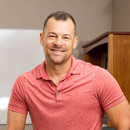The word “bold,” in the way I use it, is just a mashup of the words “blended” and “old,” as a reminder that as we pursue more innovative methodologies for instruction, old-school wisdom must come with us on that path.
EDTECH: What can teachers do to center pedagogy when using ed tech?
KIESCHNICK: From this moment forward, let’s never have a conversation about a digital tool that occurs independently from instructional strategy.
EXPLORE: Support pedagogy in school districts with educational technology.
We have to ask ourselves whether this technology is going to be a thing that helps us or helps kids build relationships with their teachers, with the content and with one another.
EDTECH: Could professional development focused on ed tech help teachers improve their mastery of these tools?
KIESCHNICK: Actually, I think this is a two-part solution. First, I think professional development is definitely one of the answers to solving the problem of using these digital tools with efficacy. I think addressing the intimidation factor of the tech tools that exist out there is the second part of solving this problem.
The dirty little secret about ed tech expertise is that ed tech experts don’t have a catalog of 30 or 40 digital tools that they’re using all the time. Teachers need to absolve themselves of the notion that every time a new tool comes out, they have to go learn what it does.
Find between 10 and 15 that do exactly what you need them to do, that support the most common instructional strategies, and then just build from there.
LEARN MORE: Discover the benefits of integrating technology into today's K–12 classrooms.
EDTECH: How do you think a teacher’s fear of using ed tech impacts student acquisition of tech expertise?
KIESCHNICK: I think that often, the only thing keeping really great technology from the hands of children in an active sense is the fear of the adults around them. It’s a fear of giving up control, and that fear is real and it is justified. At the same time, if we’re going to truly embrace the promise of ed tech and what it has in store for education, we must be willing to loosen the reins a little bit and relinquish some of that control.
EDTECH: Project-based learning and flipped classrooms are forms of relinquishing control. Is that always a good thing?
KIESCHNICK: I think there are huge advantages to that, but we have to be careful as a profession, because what I’ve seen in my observations is that for some folks, the pendulum has swung so far that everything is flipped. It’s wonderful, but the single greatest thing we’re always going to put in a classroom is a great teacher who is not only a pedagogue but is equipped to build great relationships with kids.
I just want to make sure that as we pursue things like project-based learning, as we pursue things like voice and choice and pace and place in the classroom, that our pendulum doesn’t swing so far that some teachers are lost relative to their understanding of where they belong in the classroom.
DIVE DEEPER: How can educators incorporate asynchronous learning in the classroom?
EDTECH: Your latest book is focused on engagement. How can educators re-engage their students?
KIESCHNICK: We have an engagement crisis in our schools, and we have to recognize that external elements are never going to solve the problem of engagement.
The way teachers solve the problem of engagement is by understanding that engagement is formulaic. Here’s what engaging teachers do differently: They capture and hold student attention. They’re masters of transitional phrasing. They teach clear and concise lessons. Those lessons are always followed by an activity of doing, and then there’s a summation.













